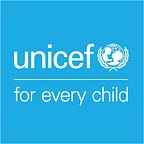29 November 2017
Sajad begins to dream again
“My name is Sajad. I’m 15 years old, and I am from the Iraqi province of Basra and I’m currently in Vienna.”
It’s been two years since UNICEF met Sajad Al-Faraji, his sister, his brother and his mother as they fled conflict and insecurity in Iraq to seek safety and a better life in Europe — like hundreds of thousands of other migrants and refugees. “I brought Sajad here so he could imagine a future,” his mother, Mona, said. “Seeing him like this helps me forget about all the difficulties in the past.”
The family’s journey through the Balkans was harrowing. And for Sajad, in a wheelchair, it was especially rough. Besides struggling to get on and off trains, people sometimes piled their luggage on his lap during the trips. November 2015 in Serbia, Sajad waits to board a train to Croatia.
The family arrives in Vienna, Austria, in late 2015.
“We’re not listening to other people saying we should go to another country,” Houda, Sajad’s sister, says at Kurierhaus, where they’re waiting to register to apply for asylum. “We’re too exhausted to move any further. Especially with Sajad.”
Sajad caught a cold during the journey. Although they get to KurierHaus early, the family waits for hours to see an official. The sun has begun to set by the time they see someone — but they leave with new IDs, cards for food, shelter and medical care, and information on the next steps for asylum.
With refugee housing at capacity in the city, the Al-Farajis are placed in a temporary shelter on Vienna’s outskirts. They’re sharing a room with two Afghan families who don’t speak Arabic — so they can’t communicate with them. Three large sheets separate their quarters, giving them some privacy.
“We feel that this is the new start for us in this country,” Houda later said. “I didn’t even expect we would get here at all,” Sajad added. “I thought we were going to die at sea. So, every day, things are good compared to that.”
Settling in at the shelter, he plays a game with other children.
Five months have passed, it’s now 2016, and the family is still living at the temporary shelter — but they think their asylum application is on track.
“Now, we are waiting for a letter from the authorities for an interview,” Mona, speaking softly, said.
In the meantime, the family began to explore the city. “We haven’t seen anything other than camps and police buildings, so we’re excited to see the city,” Sajad says. “After we finished all our paperwork and went to the police to give our information, we were no longer scared,” Houda says.
Meanwhile, their living situation has improved. They now have their own room and are sleeping on bunk beds instead of on mattresses on the floor. But, the day after they moved into the room, Sajad broke his leg — and lost the spot that opened up for him at a school for children with disabilities.
Zein, on the other hand, got into a language course at a local school a month ago. He attends classes five days a week with 15 other refugee boys.
“It’s the best thing that’s happened since I’ve been here,” he says, “and someone from our family has to learn German so they can translate.”
On a warm September Sunday in Vienna, the Al-Farajis picnic with friends on the banks of the Danube River. Houda and Mona talk about the ongoing challenges and the family’s prospects for the future.
“We’re getting used to the new country … every step, every month, I see more changes,” Mona says.
But, some days are harder than others. It’s 2017, and some of the same problems remain. The family is still waiting for an initial interview to find out if they can get asylum. And Sajad still can’t get into school. Frustrated and dejected, he spends hours playing video games on his cell phone.
And other days are better. Sajad has a new wheelchair that’s been custom-made to fit his body and better support his spine. And he’s now in an integrated school for people with disabilities.
“This year is going much better. I have friends in school now, and I can talk with them,” he says.
He’s studying German, reading, writing, maths, and playing sports.
“There are so many options in front of me now, it’s not like before,” Sajad says. “I want to be with the Austrian people, I want to work as a chef, I want to travel.”
Two years after fleeing Iraq, he has finally begun to dream again.
“I’ve met so many people, and seen many things, and I’m one step closer to my dreams. I want to have a life like others,” Sajad said happily. “I like to take him out, because when I see him smile, I’m happy,” Houda says. The two take in a movie in central Vienna.
Read more about Sajad and his family’s experiences as they settle in Austria after fleeing Iraq:
